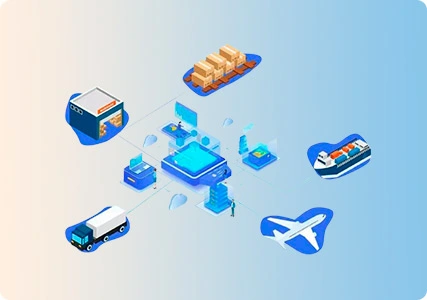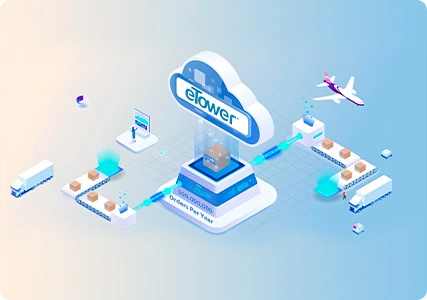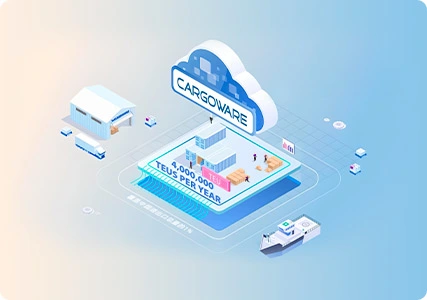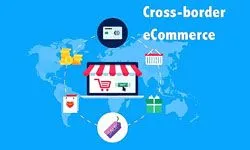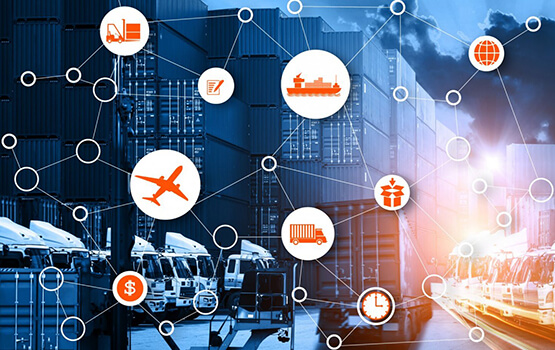
According to Harvard Business Review, progress in adopting cloud technology had been gradual until 2020. However, in the wake of the COVID-19 pandemic and the subsequent surge in e-commerce, the utilization of cloud computing within the logistics industry has undergone a remarkable acceleration. According to Report Ocean, the market for cloud-based supply chain management was valued at USD 4.4 billion in 2020. Presently, it is demonstrating an impressive compound annual growth rate of 20%, indicating that the market is projected to reach a substantial USD 27 billion by 2030.
The emergence of cloud computing technology has forged a globally interconnected digital realm, offering immense potential for the logistics sector. MIT's explanation characterizes cloud computing as the on-demand availability of computing resources via the internet. In simpler terms, it entails harnessing computational capabilities without the need for physical proximity. Instead, users leverage a configuration operated by a cluster of hardware located remotely worldwide, accessed through the internet. This cloud infrastructure encompasses servers, storage, databases, networking, software, analytics, and intelligent features.
Service Models
Cloud computing services are categorized into three distinct deployment methods, collectively referred to as the cloud computing stack or the cloud computing reference model. These models are Infrastructure as a Service (IaaS), Platform as a Service (PaaS), and Software as a Service (SaaS). They exhibit varying levels of abstraction, with IaaS being the most fundamental and SaaS being the most comprehensive.
1. Infrastructure as a Service (IaaS): This service empowers consumers to procure essential computing resources such as processing power, storage, and networks. Consumers can deploy and operate diverse software, encompassing operating systems and applications. While consumers have authority over operating systems, storage, and deployed applications, they lack control over the underlying cloud infrastructure. They might possess limited control over select networking elements, such as host firewalls.
2. Platform as a Service (PaaS): With PaaS, consumers can deploy applications they have developed or obtained onto the cloud infrastructure. These applications are fashioned using programming languages, libraries, services, and tools endorsed by the cloud provider. Consumers are not tasked with overseeing the foundational cloud infrastructure, including servers, networks, and storage. However, they maintain jurisdiction over the applications they deploy, along with the potential to configure settings within the application-hosting environment.
3. Software as a Service (SaaS): This model enables consumers to utilize applications offered by the cloud provider, which operate on the cloud infrastructure. Accessible from diverse client devices through streamlined interfaces like web browsers, these applications grant users convenience. Consumers are not responsible for managing the underlying cloud infrastructure, including servers, networks, and storage. Instead, they retain control over the applications they use and have the option to modify configuration settings within the application-hosting environment..
A 2021 survey by Deloitte and the Materials Handling Institute (MHI) industrial body found that reducing risk is a priority for many supply chain professionals. An additional 54% of those surveyed said they were substantially increasing their investment in cloud computing and storage to make the supply chain more resilient. In the same way that the cloud computing in logistics boosts agility (improving speed, scalability and visibility), it can help reduce risks and increase resilience in the supply chain. A recent Accenture survey found 52% of supply chain executives said the cloud had help them increase resilience. The executives also said the cloud had increased the accuracy of their demand forecasts by 26%.
eTower is a cross-border e-commerce logistics collaboration platform software. Through logistics software integration, all labor divisions in the cross-border logistics chain can easily share data and work together efficiently and conveniently.
Logistics software SaaS services based on cloud computing help those logistics providers(3PL/4pl logistics companies) who have the heart and strength to quickly cut into the field of cross-border e-commerce, namely, connect and use, and charge on demand, so that logistics providers can focus on their areas of expertise without being bound by informatization.

